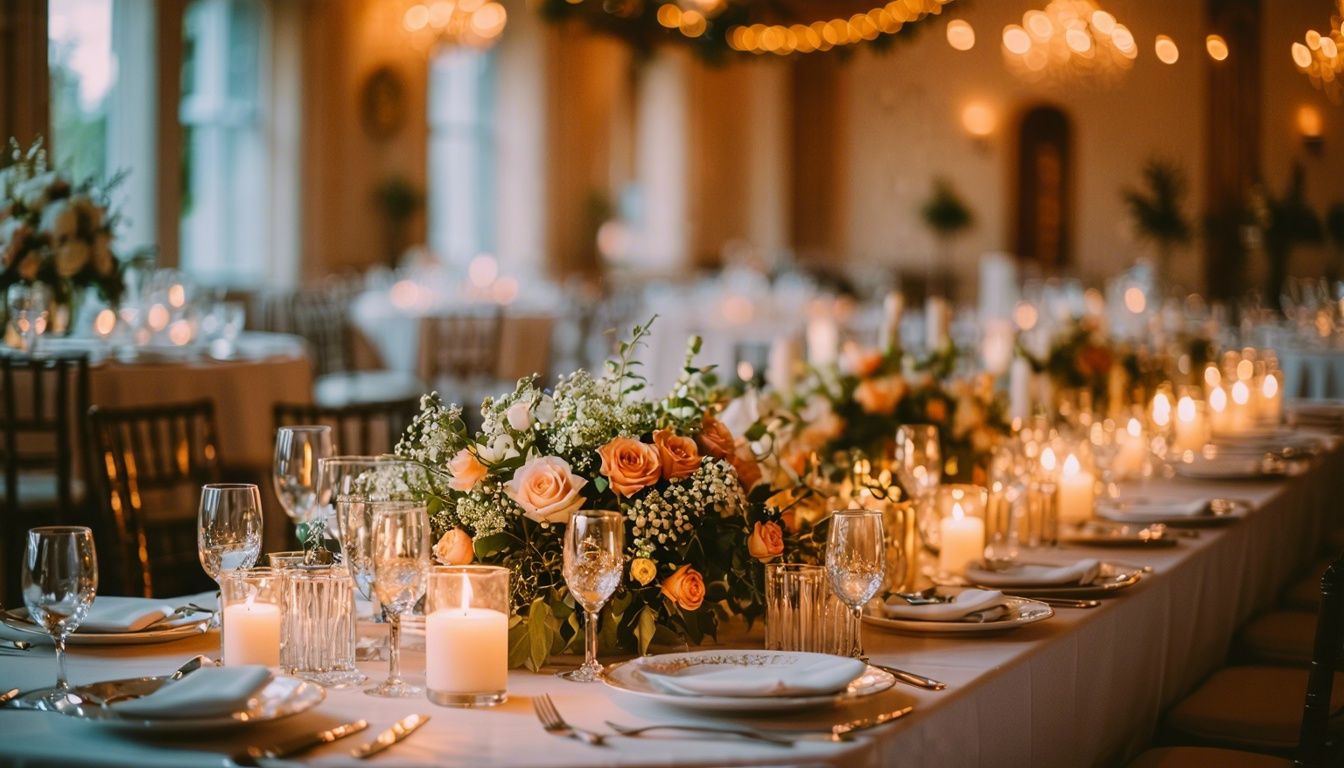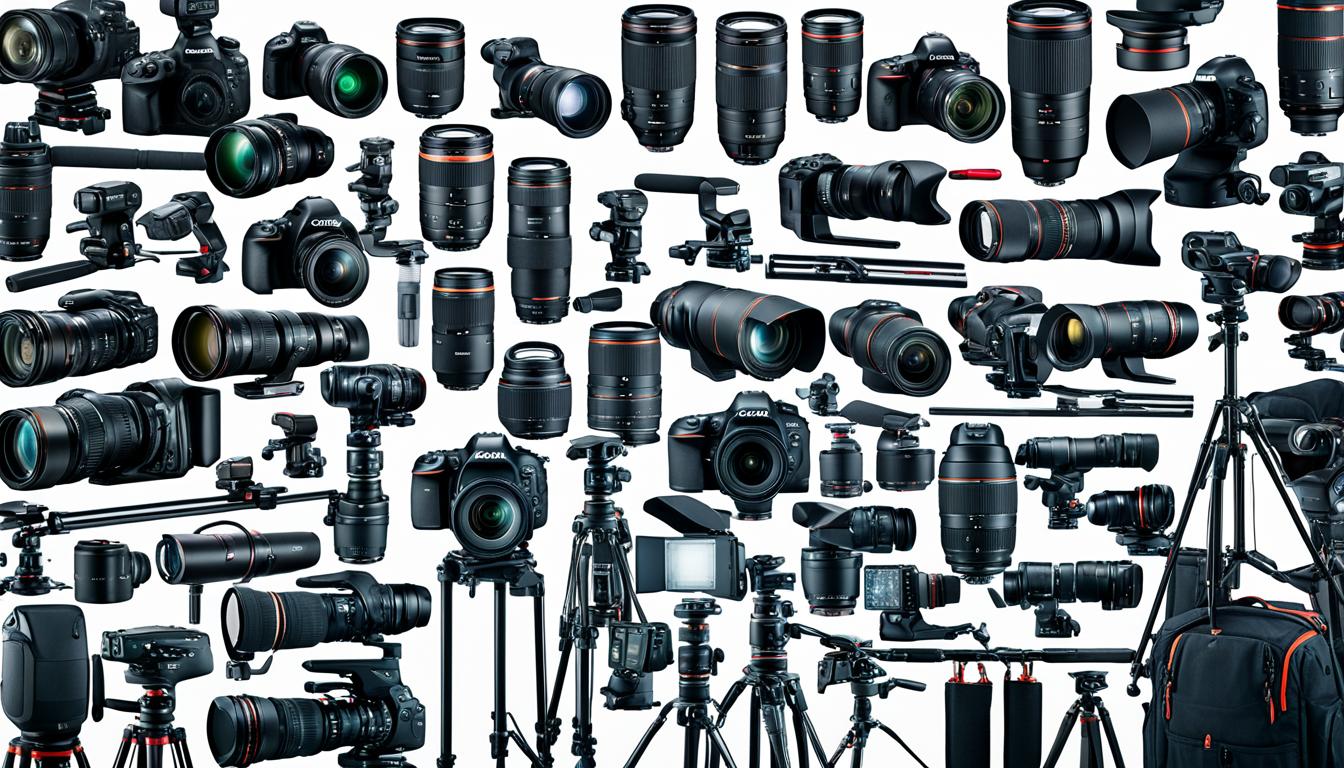Welcome to our comprehensive guide on event photography business marketing and pricing. In today’s competitive industry, it’s essential to have effective strategies in place to stand out from the crowd and attract clients. Marketing your event photography services and setting competitive pricing are key elements for success.
When it comes to pricing, there are a few factors to consider, including location, experience, and the type of event. Researching the market rate and calculating your operating costs will help you determine your pricing structure. Consider different pricing models such as hourly rates, flat fees, package rates, or value-based rates to find what works best for your business.
Marketing your event photography services is equally important. Creating a strong online presence with a professional website and leveraging social media platforms can help you showcase your portfolio and attract potential clients. Networking with event planners, wedding planners, and venues can also lead to valuable referrals. Offering specialized services or packages tailored to specific events or target markets can further set you apart from the competition.
By utilizing these marketing and pricing strategies, you can position your event photography business for success and attract a steady stream of clients.
Key Takeaways:
- Effective marketing strategies can help event photographers attract clients and differentiate from competitors.
- Researching the market rate and calculating operating costs are crucial for setting competitive pricing.
- Consider different pricing models, such as hourly rates, flat fees, package rates, or value-based rates.
- Establishing a strong online presence and networking with industry professionals can help promote your services.
- Offering specialized services or packages tailored to specific events or target markets can help attract clients.
Understanding Photography Pricing Models
When it comes to pricing their services, event photographers have a range of models to choose from. These pricing models help photographers determine their rates and ensure they are compensated fairly for their work. Let’s explore some of the most common photography pricing models:
- Hourly Rate: In this model, photographers charge clients based on the number of hours worked. This pricing structure is often used for events where the duration is uncertain or when clients only need photography services for a specific timeframe.
- Flat Fee: Alternatively, photographers can charge a flat fee for the entire project, regardless of the time or number of photos. This model is suitable for clients who prefer a fixed cost and may require photography services for an extended period.
- Package Rates: Many photographers offer different packages with varying features and prices. These packages can include different levels of service, such as the number of photos, hours of coverage, prints, or album options. Offering package rates allows photographers to cater to different client needs and budgets.
- Value-Based Rate: This model focuses on the value and impact of the photos to the clients. Photographers determine their rates based on factors such as the significance of the event or the potential commercial value of the images. Value-based rates are often used for high-profile events or commercial photography projects.
When determining pricing for their services, photographers can take advantage of resources like photography pricing calculators or consult industry-specific guides to gather information on average rates for different types of photography. These tools can assist photographers in setting competitive and profitable prices for their work.
Using a photography pricing calculator can help photographers estimate costs, factor in their desired profit margin, and determine the appropriate pricing structure for their services. It provides a comprehensive breakdown of expenses and helps photographers set rates that reflect their value and expertise.
Using a pricing calculator has been a game-changer for our photography business. It allows us to consider all the important factors while setting our rates and ensures we are pricing our services competitively in the market.
Factors Influencing Event Photography Pricing
Setting the right price for event photography services involves considering several factors that influence pricing. By understanding these influences, photographers can determine competitive and profitable rates for their work.
- Market Rate: The market rate in a specific location serves as a benchmark for event photography pricing. It’s important for photographers to research and analyze the rates charged by other professionals in their area to ensure their prices are in line with industry standards.
- Photographer’s Experience: The experience and skill level of the photographer play a significant role in pricing. More experienced photographers with a proven track record can command higher rates. Clients often value photographers who have successfully captured numerous events and possess the expertise to handle various situations.
- Type and Size of the Event: The type and size of the event being photographed also contribute to pricing. Events with higher budgets and larger guest counts may require additional equipment, more extensive coverage, or multiple photographers, resulting in higher rates.
- Number of Images Included: The number of images included in the package or service can impact pricing. Photographers may charge differently based on the number of final edited images delivered to the client.
- Additional Services and Special Requests: Any additional services or special requests from clients can affect pricing. This could include photo retouching, album creation, expedited delivery, or custom printing options.
- Photographer’s Operating Costs: Consideration of the photographer’s operating costs is vital to ensure profitability. This includes expenses related to equipment maintenance, travel, insurance, marketing, and post-production.
The Importance of Thorough Market Research
Thorough market research is essential for event photographers to understand the factors influencing pricing and set competitive rates. By gathering information about the market rate, assessing their experience and skill level, and considering the specific requirements of each event, photographers can ensure they offer fair pricing that reflects the value they provide.

| Factors | Description |
|---|---|
| Market Rate | The prevailing pricing in the local market that sets the baseline for event photography rates. |
| Photographer’s Experience | The level of expertise and years of experience a photographer possesses, influencing their rates. |
| Type and Size of the Event | The nature and scale of the event, which may require additional resources and affect pricing. |
| Number of Images Included | The quantity of final edited images delivered to the client as part of the package. |
| Additional Services and Special Requests | Any supplemental services or specific requests made by the client that impact pricing. |
| Photographer’s Operating Costs | Expenses incurred by the photographer, such as equipment, insurance, marketing, and post-production. |
Effective Marketing Strategies for Event Photographers
When it comes to promoting your event photography business and attracting clients, implementing effective marketing strategies is crucial. By utilizing various tactics, you can increase your visibility, build relationships, and differentiate yourself from competitors.
1. Establish a Strong Online Presence
Creating a professional website is essential for showcasing your portfolio, services, and contact information. Optimize your website for search engines so that potential clients can easily find you. Additionally, utilize social media platforms to share your work, engage with potential clients, and promote your services. By consistently posting high-quality content and interacting with your audience, you can establish yourself as a trusted and skilled event photographer.
2. Network with Event Planners and Venues
Attending industry events, such as conferences and trade shows, enables you to connect with event planners, wedding planners, and venues. Building relationships with these professionals can lead to referrals and collaborations. Consider offering to photograph events for free or at a discounted rate in exchange for exposure and recommendations. Networking is a powerful tool for expanding your client base and gaining credibility within the industry.
3. Offer Specialized Services or Packages
To stand out from the competition, consider offering specialized event photography services or packages tailored to specific events or target markets. For example, you could specialize in corporate events, weddings, or live performances. By focusing on a niche, you can position yourself as an expert in that area and attract clients seeking specialized photography services.
4. Utilize Online Advertising
Take advantage of online advertising platforms, such as Google Ads or social media advertising, to reach a larger audience. These platforms allow you to target specific demographics, locations, and interests, maximizing the effectiveness of your marketing budget. Craft compelling ad copy and visually captivating images to capture the attention of potential clients.
5. Participate in Bridal Shows or Trade Fairs
Wedding and event-focused trade shows or bridal fairs can provide excellent opportunities for showcasing your work, connecting with engaged couples and potential clients, and building brand awareness. Be sure to have a visually appealing booth, informative promotional materials, and special offers or discounts exclusively for event attendees.
6. Leverage Partnerships with Related Businesses
Collaborating with related businesses can be mutually beneficial for both parties. For example, partnering with wedding planners, event venues, or rental companies can result in cross-promotion and referrals. Consider offering discounted photography services to their clients in exchange for referrals or displaying your portfolio at their location.
7. Showcase Testimonials and Client Reviews
Displaying testimonials and client reviews prominently on your website and social media platforms can help build trust and demonstrate the quality of your services. Request feedback from satisfied clients and encourage them to share their positive experiences. Potential clients are more likely to choose a photographer with positive reviews and testimonials.
By implementing these marketing strategies, you can effectively promote your event photography business, attract new clients, and build a reputable brand within the industry.
| Marketing Strategies | Benefits |
|---|---|
| Establishing a strong online presence | Increased visibility and accessibility for potential clients |
| Networking with event planners and venues | Referrals and collaborative opportunities |
| Offering specialized services or packages | Attracting clients seeking specific event photography needs |
| Utilizing online advertising | Expanded reach and targeted marketing |
| Participating in bridal shows or trade fairs | Showcasing work, connecting with potential clients |
| Leveraging partnerships with related businesses | Cross-promotion and referral opportunities |
| Showcasing testimonials and client reviews | Building trust and demonstrating quality |
Communicating Value and Negotiating Rates
When it comes to communicating value to clients, we, as event photographers, have various strategies at our disposal to differentiate ourselves from competitors. One effective method is showcasing our unique skills, creativity, and expertise. By highlighting our portfolio, we can demonstrate the quality of our work and the value we bring to our clients.
Client Testimonial: “Working with ABC Photography was a fantastic experience. Their attention to detail and ability to capture the essence of our event truly set them apart.”
In addition to sharing our portfolio, it’s important to highlight client testimonials and positive reviews. These testimonials serve as social proof and can greatly influence potential clients’ perception of our value and reliability. We can also provide clear information about our services, outlining the specific benefits and value-added features we offer.
When it comes to negotiating photography rates, it’s crucial to have a clear understanding of our own worth. Factors such as our experience, the quality of our work, and the unique value we bring to clients should be taken into account when determining our rates.
By confidently presenting our pricing structure and explaining the value behind our rates, we can effectively communicate why investing in our services is a smart decision for potential clients. While it’s important to be open to some flexibility in certain circumstances, it’s essential that we are compensated fairly for our time and expertise.
Pricing Considerations for Different Photography Niches
When it comes to pricing, different photography niches have unique considerations that photographers need to take into account. Here’s a breakdown of pricing factors for some popular niches:
Event Photography
Event photographers often charge either an hourly rate or a package rate, depending on the type and size of the event. Here’s an example of typical pricing for event photography:
| Event Type | Pricing Structure |
|---|---|
| Corporate conference | Hourly rate: $150 – $300 |
| Wedding reception | Package rate: $1,500 – $3,000 |
| Music festival | Hourly rate: $200 – $400 |
Wedding Photography
Wedding photography pricing can vary significantly depending on factors like location, services offered, and the level of expertise. Here’s a breakdown of average pricing for wedding photography:
| Package | Pricing Range |
|---|---|
| Basic package | $1,000 – $2,000 |
| Standard package | $2,500 – $4,000 |
| Premium package | $4,500 – $8,000 |
Commercial Photography
Commercial photography rates typically include day rates and licensing fees, which vary based on the scope of the project and the intended usage of the images. Here’s an overview of commercial photography pricing:
| Commercial Photography Service | Pricing Structure |
|---|---|
| Product photography | Day rate: $500 – $1,500 Licensing fees: $200 – $500 per image |
| Architectural photography | Day rate: $1,000 – $3,000 Licensing fees: $500 – $1,000 per image |
| Advertising photography | Day rate: $1,500 – $5,000 Licensing fees: $1,000 – $2,500 per image |
In addition to these niches, other photography specialties like portrait photography, real estate photography, product photography, and food photography have their own pricing models and factors to consider. It’s crucial for photographers to research and understand the market trends and expectations specific to their chosen niche to set appropriate pricing.

Conclusion
Pricing and marketing are integral components for the success of any event photography business. By having a comprehensive understanding of market rates and considering factors such as location, experience, and operating costs, we can establish effective pricing strategies that are both competitive and profitable for our services.
When it comes to marketing our event photography services, building a strong online presence is essential. This includes creating a professional website to showcase our portfolio and services, optimizing for search engines to increase visibility, and leveraging social media platforms to share our work and engage with potential clients.
Networking is another valuable strategy that can help us attract clients and stand out from our competitors. By actively connecting with event planners, wedding planners, and venues, we can establish relationships that lead to referrals and new business opportunities. Additionally, offering specialized services or packages tailored to specific events or target markets can further differentiate us and attract our ideal client base.
In our event photography business, effectively communicating the value we provide to clients and negotiating rates based on our expertise and worth are critical skills. By showcasing our unique skills, creativity, and expertise, we can demonstrate our value and differentiate ourselves from competitors. Furthermore, by confidently presenting our pricing structure and explaining the value behind our rates, we can foster trust and understanding with clients, ensuring we are compensated fairly for our time and expertise.
By implementing these strategies and considerations in our event photography business, we can position ourselves for success in this competitive industry. From setting effective pricing to implementing targeted marketing strategies, we have the tools to attract clients, deliver exceptional service, and thrive as event photographers.
FAQ
What are some effective marketing strategies for event photographers?
Event photographers can create a strong online presence through a professional website and social media platforms. They can also network with event planners and venues, offer specialized services or packages, and utilize online advertising and partnerships with related businesses.
What factors influence event photography pricing?
Event photography pricing is influenced by factors such as the market rate in a specific location, photographer’s experience, the type and size of the event, the number of images included, any additional services or special requests, and the photographer’s operating costs.
How can event photographers communicate value to clients and negotiate rates?
Event photographers can communicate value to clients by emphasizing their unique skills, creativity, and expertise. They can showcase their portfolio, highlight client testimonials, and provide clear information about their services. When negotiating rates, they should have a clear understanding of their worth and be open to flexibility in certain circumstances while ensuring fair compensation for their time and expertise.
What are some common pricing models for event photographers?
Event photographers can use pricing models such as hourly rates, flat fees, package rates, or value-based rates to determine their pricing. They can choose the model that best aligns with their business goals and the needs of their clients.
How do different photography niches impact pricing considerations?
Different photography niches, such as wedding photography, commercial photography, portrait photography, real estate photography, and product photography, have their own pricing models and factors to consider. It’s important for photographers to research and understand the market trends and expectations specific to their chosen niche to set appropriate pricing.
How can photographers estimate their pricing for event photography?
Event photographers can estimate their pricing by researching the market rate, calculating their operating costs, and considering factors such as location, experience, and the type of event. Online tools like photography pricing calculators or industry resources can provide helpful information on average rates for different types of photography.
How can I market and price my fine art photography business like event photography?
When selling fine art photography work, consider marketing strategies similar to event photography. Offer packages, create a strong online presence, and showcase your work at art shows. Pricing can be based on the value of the artwork, size, and exclusivity. Emphasize the unique and high-quality nature of your pieces.




